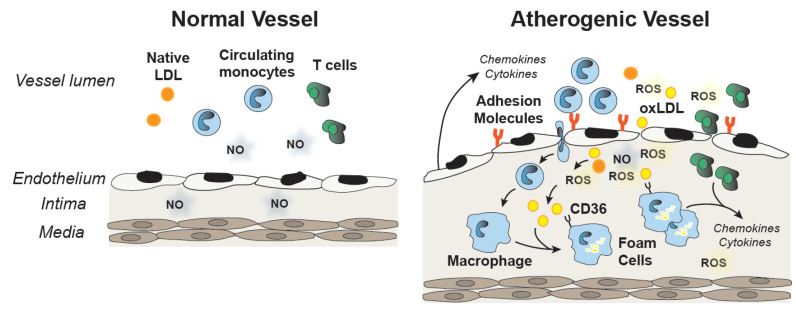Figure 2.
Plaque development in blood vessels. The normal vessel has an endothelial cell layer that produces nitric oxide (NO). Endothelial cell dysfunction and an accumulation of reactive oxygen species (ROS) promotes the pro-inflammatory activation of endothelial cells, including the release of chemokines and cytokines and the expression of adhesion molecules that contribute to the uptake of monocytes and T cells in the intima. Conversion of monocytes to macrophages and foam cells that take up oxidized LDL (oxLDL) through CD36 receptors as well as the activation of T cells causes the release of additional proatherogenic chemokines and cytokines and plaque development.

